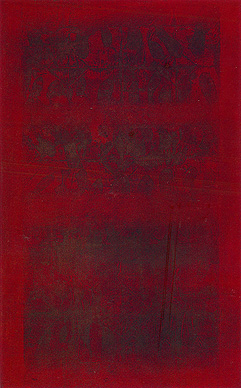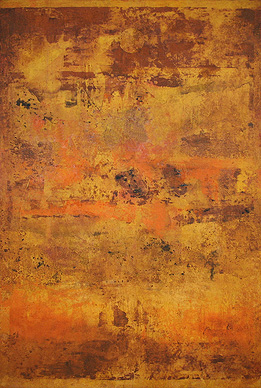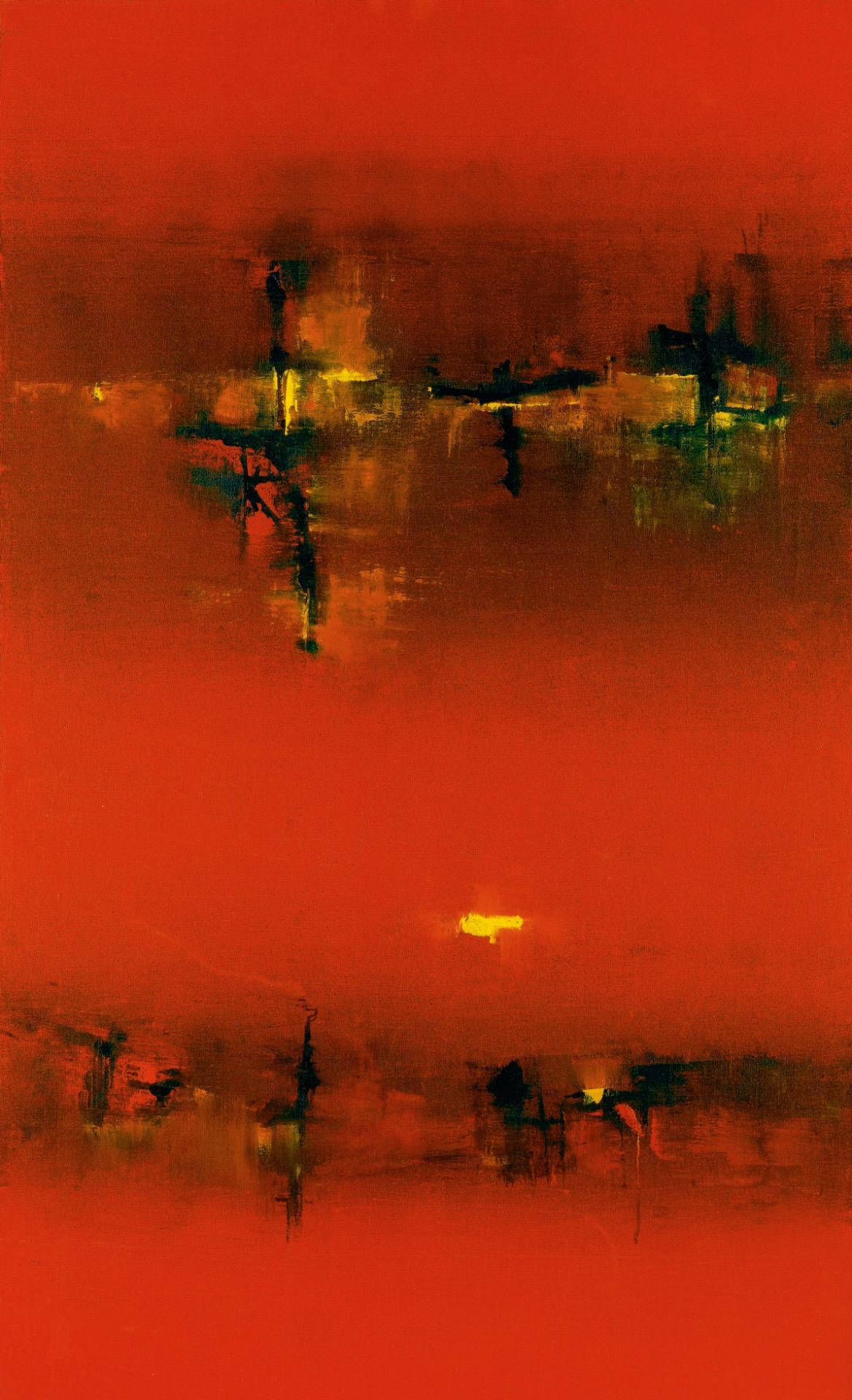Vasudeo Gaitonde
Vasudeo Gaitonde was born in Maharashtra of Goan parentage. He received his diploma from the J. J. School of Art in 1948.[1] He died in 2001. Vasudev S. Gaitonde was regarded as one of the most finest and cloistered abstract painter of India. He was the member of the Progressive Artist Group Bombay.In 1971, he was awarded the Padma Shri i.e. the highest award for creative excellence given by the Government of India. Gaitonde experimented hugely with form and shape in his works. Vasudev had a profound influence of Zen philosophy and ancients calligraphy on him. In the midst of his art work, one could notice the control and the conglomerated structure finely depicted. Gaitonde preferred to enjoy a slow and a meticulous painting process unlike his contemporaries that is why he produced only a few finished works. Gaitonde's use of symbolic element and very few ground lines made his work appear like a flowing river.
(source wikipedia)
 |
V S Gaitonde
Untitled
Signed and dated in English and signed in Devnagari (verso)
Oil on canvas
1975
65 x 40 in | 165.1 x 101.6 cm
Category: Painting
Style: Abstract
|
“The continual work of laying on pigment, dissolving it,
stripping it off, and overlaying (like a process of nature) comes to a natural
close as the pigmentation comes to a natural conclusion. The painter is at the
controls, he decides when the painting has arrived at its capacity to
articulate, yet he registers this intuitively: ‘Like music, I know when it is
at an end’. So far his visual sensibility has been absorbed in the action of
painting. Now it takes over and finalizes. He takes his time about this. He
lives with the painting; views it continually” (Pria Karunakar, “V.S.
Gaitonde”, Lalit Kala Contemporary 19-20, Lalit Kala Akademi, New Delhi, 1975,
p. 16).
Like his other canvases of the 1970s, this large work
mirrors the artist’s focus on process and precision, having been slowly
developed through the studied application and partial removal of different
layers of paint with a roller and palette knife. Here, Gaitonde creates a deep,
almost smouldering crimson surface, traversed by several darker horizontals
through which his script-like forms, like primitive and undecipherable
hieroglyphs, seem to materialize and recede.
Speaking about his canvases, Pria Karunakar notes, “They are
sensuous. Each is unified by a single colour. The colour glows; it becomes
transparent; it clots. It is this play of pigment, as it is absorbed physically
into the canvas, that directs the eye…In the application of the colour itself
there is an order. This is hieratic, but implicit. It is never insistent. The
colour settles and congeals into a series of approximate horizontals throwing
the compositional weight somewhat lower than centre and balancing the left and
right of the canvas like the arms of a scale. The order is almost deliberately
obscured by the distribution of near–random forms across the surface. These
topographical or hieroglyphic forms themselves are made to dissolve into the
field like enamel in an encaustic” (Pria Karunakar, “V.S. Gaitonde”, Lalit Kala
Contemporary 19-20, Lalit Kala Akademi, New Delhi, 1975, p. 15)
(source :- Saffronart.com)
 |
V S Gaitonde
Untitled
Signed and dated in English and signed in Devnagari (verso)
Oil on canvas
1983
68 x 45 in | 172.7 x 114.3 cm
Category: Painting
Style: Abstract
|
 |
| 1962 |
 |
| 1995 |
 |
| 1995 |
 |
| 1959 |
 |
| ink on paper |
Vasudeo Gaitonde had not very large body of work, and seen
as Indian Rotokho.

V S. Gaitonde sold at 237 million rupee, the highest fetched
price for an Indian Artist at the Christie’s International Plc in Mumbai.
No comments:
Post a Comment